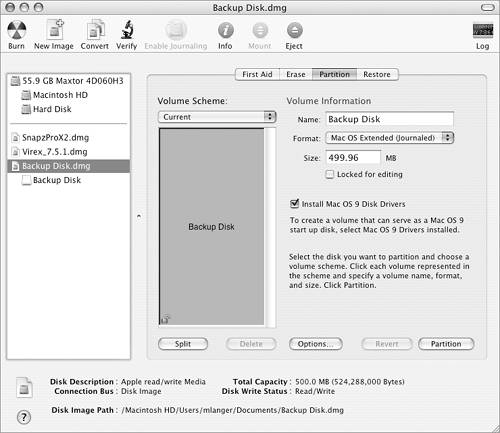- OS X Extended (Case-sensitive, Journaled): Uses the Mac format and is case sensitive to folder names. For example, 'Photos', 'photos', and 'PHOTOS' are three different folders. MS-DOS and exFAT: Used for Windows volumes that are 32GB or less or that are over 32GB.
- Mac OS Extended (Case-sensitive, Journaled) makes case-sensitive folders and Mac format. ('Backup' and 'backup' will be two different files.) Mac OS Extended (Case-sensitive, Journaled, Encrypted) adds password and encryption protection to the partition while also including Mac formatting with case sensitive folder names.
Os X Extended Case Sensitive Journaled Encrypted
I am coming from Linux world. I just realized that my MacBook is using Mac OS Extended (Journaled) partition type today and it's case-insensitive. That concerns me a lot as a developer. Because my previous life never use a case-insensitive partition. I will mainly use Terminal.app in MacBook and Homebrew, Xcode, Flutter etc.
Disk Utility User Guide
Disk Utility on Mac supports several file system formats: Google chrome taking forever to install.
Apple File System (APFS): The file system used by macOS 10.13 or later.
Mac OS Extended: The file system used by macOS 10.12 or earlier.
MS-DOS (FAT) and ExFAT: File systems that are compatible with Windows.
Apple File System (APFS)
Apple File System (APFS), the default file system for Mac computers using macOS 10.13 or later, features strong encryption, space sharing, snapshots, fast directory sizing, and improved file system fundamentals. While APFS is optimized for the Flash/SSD storage used in recent Mac computers, it can also be used with older systems with traditional hard disk drives (HDD) and external, direct-attached storage. macOS 10.13 or later supports APFS for both bootable and data volumes.
APFS allocates disk space within a container (partition) on demand. When a single APFS container has multiple volumes, the container's free space is shared and is automatically allocated to any of the individual volumes as needed. If desired, you can specify reserve and quota sizes for each volume. Each volume uses only part of the overall container, so the available space is the total size of the container, minus the size of all the volumes in the container.
Choose one of the following APFS formats for Mac computers using macOS 10.13 or later.
APFS: Uses the APFS format. Choose this option if you don't need an encrypted or case-sensitive format.
APFS (Encrypted): Uses the APFS format and encrypts the volume.
APFS (Case-sensitive): Uses the APFS format and is case-sensitive to file and folder names. For example, folders named 'Homework' and 'HOMEWORK' are two different folders.
APFS (Case-sensitive, Encrypted): Uses the APFS format, is case-sensitive to file and folder names, and encrypts the volume. For example, folders named 'Homework' and 'HOMEWORK' are two different folders.
You can easily add or delete volumes in APFS containers. Each volume within an APFS container can have its own APFS format—APFS, APFS (Encrypted), APFS (Case-sensitive), or APFS (Case-sensitive, Encrypted).
Mac OS Extended
Choose one of the following Mac OS Extended file system formats for compatibility with Mac computers using macOS 10.12 or earlier.
Mac OS Extended (Journaled): Uses the Mac format (Journaled HFS Plus) to protect the integrity of the hierarchical file system. Choose this option if you don't need an encrypted or case-sensitive format.
Mac OS Extended (Journaled, Encrypted): Uses the Mac format, requires a password, and encrypts the partition.
Mac OS Extended (Case-sensitive, Journaled): Uses the Mac format and is case-sensitive to folder names. For example, folders named 'Homework' and 'HOMEWORK' are two different folders.
Mac OS Extended (Case-sensitive, Journaled, Encrypted): Uses the Mac format, is case-sensitive to folder names, requires a password, and encrypts the partition.
Windows-compatible formats
Choose one of the following Windows-compatible file system formats if you are formatting a disk to use with Windows.

MS-DOS (FAT): Use for Windows volumes that are 32 GB or less.
ExFAT: Use for Windows volumes that are over 32 GB.
Case-sensitivity on Time Machine backups.A case-sensitive format means upper-case letters in file names are seen as different from lower-case letters. That's the default if Time Machine formats it for you, but non-case-sensitive (also known as case-ignorant) is the default for all other volumes. Do not use case-sensitive unless you're sure you need it.
Google desktop update index.

MS-DOS (FAT): Use for Windows volumes that are 32 GB or less.
ExFAT: Use for Windows volumes that are over 32 GB.
Case-sensitivity on Time Machine backups.A case-sensitive format means upper-case letters in file names are seen as different from lower-case letters. That's the default if Time Machine formats it for you, but non-case-sensitive (also known as case-ignorant) is the default for all other volumes. Do not use case-sensitive unless you're sure you need it.
Google desktop update index.
Adobe premiere elements mac amazon.
Check the Format of all the disk/partitions to be backed-up, via Disk Utility, in your Applications/Utilities folder. Click each partition in the sidebar (indented under the main line of the drive), and you'll see the Format towards the lower left. Most are Mac OX Extended (Journaled); see if any are Mac OS Extended (Case-sensitive, Journaled). (Effective with Lion 10.7.x, they may also be encrypted.)
If ANY disk being backed-up is case-sensitive, then your backups must be case-sensitive also. There's no choice: that's the only way Time Machine can back them up. So if you have, or think you might add, a case-sensitive disk, make your backup disk Mac OS Extended (Case-sensitive, Journaled) now.
Os X Extended Case Sensitive Journaled
But if NO disk/partition being backed-up is case-sensitive, the backup volume can be case-sensitive, but we recommend it be case-ignorant: Mac OX Extended (Journaled). Most of the time there's no difference, but if the backups are case-sensitive, there may be problems when restoring previous versions of files via the Time Machine browser (the 'Star Wars' display). See Troubleshooting item #E7 for a detailed explanation.
